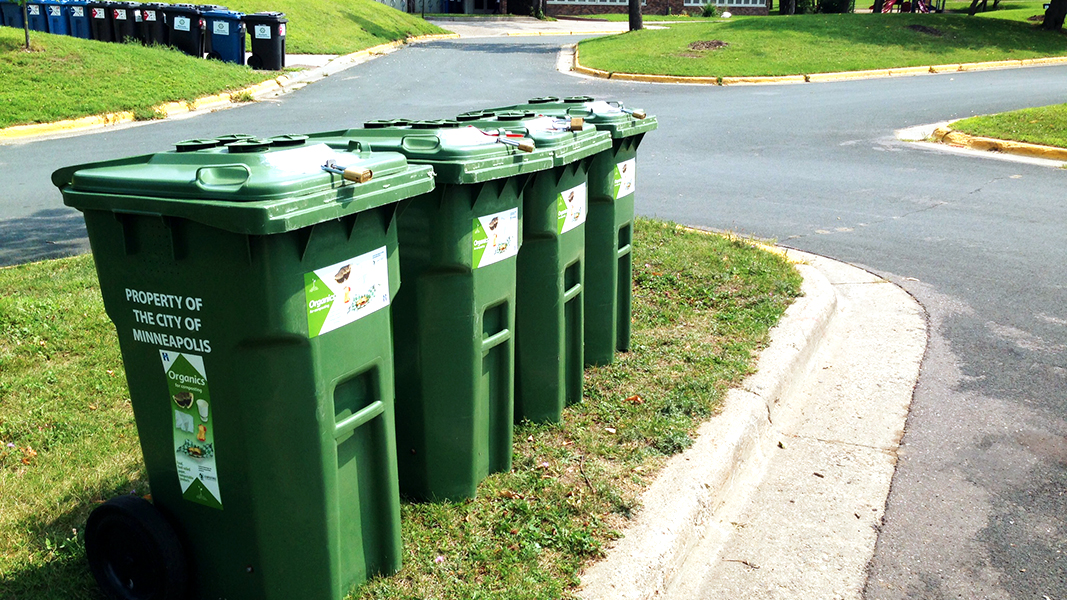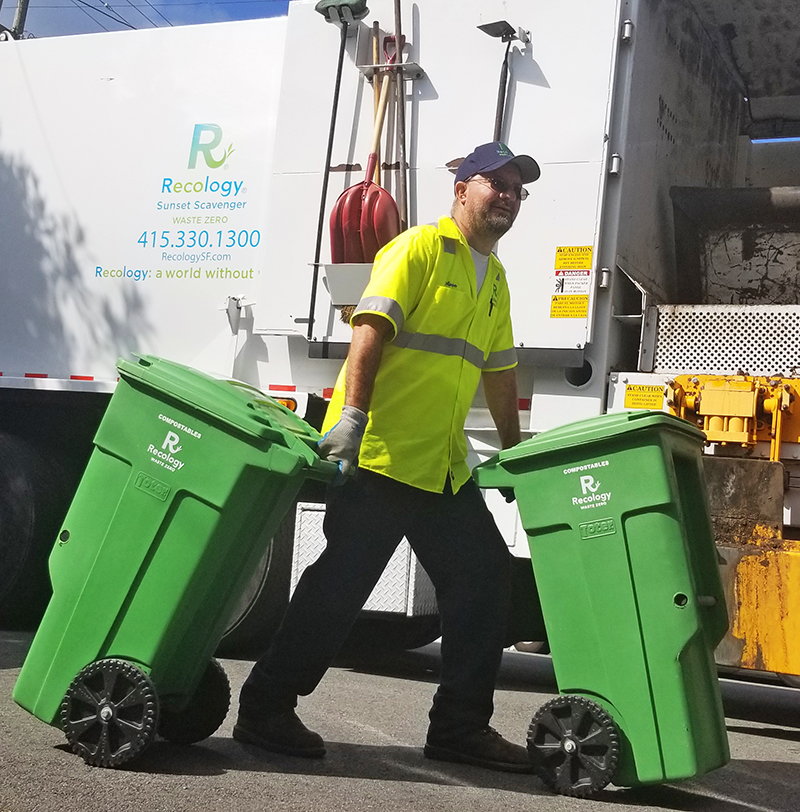Top: City of Minneapolis Folwell drop-off site. Photo courtesy of Minneapolis Solid Waste & Recycling
Nora Goldstein
BioCycle formally began its nationwide survey of residential food scraps collection programs in the U.S. in 2005. The survey has been repeated in 2006, 2007, 2009, 2011, 2012, 2013/14, 2017 and now again in 2021. (All survey reports are available on BioCycle.net.) In 2005, 24 communities reported having curbside collection programs for food scraps. In 2021, BioCycle identified a total of 510 municipally supported residential curbside and/or drop-off collection programs for food scraps. Data also was collected on 49 private, nonprofit or worker-owned subscription services for household food scraps.
As was stated in Part I, data was only included for programs that responded to the BioCycle access survey questionnaire, or those confirmed via website mining, BioCycle articles, and email inquiries. Therefore, some programs and communities listed in the 2017 report are not reflected in the 2021 data. In addition, a number of programs available in California are not captured in this study as BioCycle was unable to get in touch with program leads during the window of data collection.
With the 2021 Access Study under our belt, BioCycle will continue collecting data on residential food scraps collection access programs, including those not successfully contacted during our study period. In California, outreach to programs will continue in 2022, when more municipally supported programs are expected to be launched because of state requirements ending food scraps disposal.
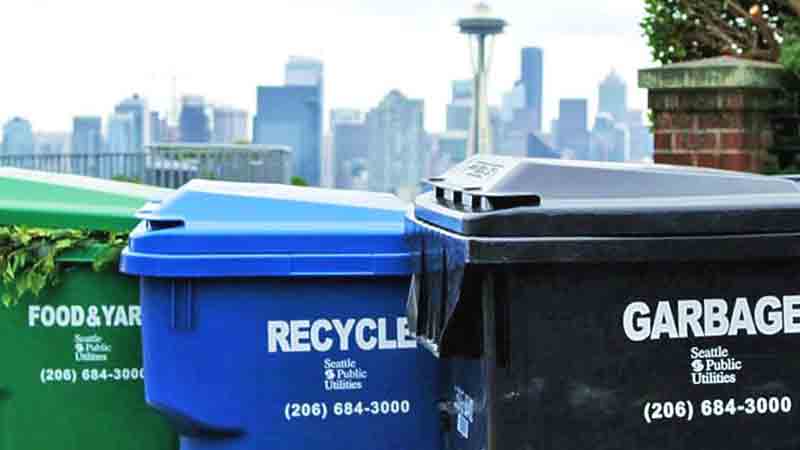
The City of Seattle collects household food scraps commingled in the same cart as green waste. Photo courtesy of Seattle Public Utilities
Municipally supported programs were covered in Part I of the Access Study report. These were divided into three categories for the 2021 study: Curbside only; Drop-Off only; and Curbside + Drop-Off. Totals for these three categories — and links to the tables — are as follows:
- Curbside only: 133 programs, 181 communities, and 3.6 million households with access [Table 1]
- Drop-off only: 101 programs, 192 communities, and 4.2 million households with access [Table 2]
- Curbside + Drop-off: 39 programs, 137 communities, and 2.3 million households with access [Table 3]
Part II of the Access Study report covered the private, nonprofit and worker-owned food scraps subscription collection services [Table 4]. A total of 49 enterprises responded to the BioCycle survey; 124 received the link to the questionnaire.
Tables have been created in downloadable PDFs for the four program types (see links, above). For counties or solid waste authorities that cover multiple communities, the total number represented is inserted after the jurisdiction or authority’s name. Toward the end of this year, and into 2022, BioCycle will be collaborating with the Biodegradable Products Institute (BPI) to add all the programs providing residential food scraps collection access data into the FindAComposter.com portal. Programs will be mapped, and details about feedstock types accepted by each program will be listed. As new programs are identified and data collected, or existing ones updated, the information will be added to FindAComposter.com.
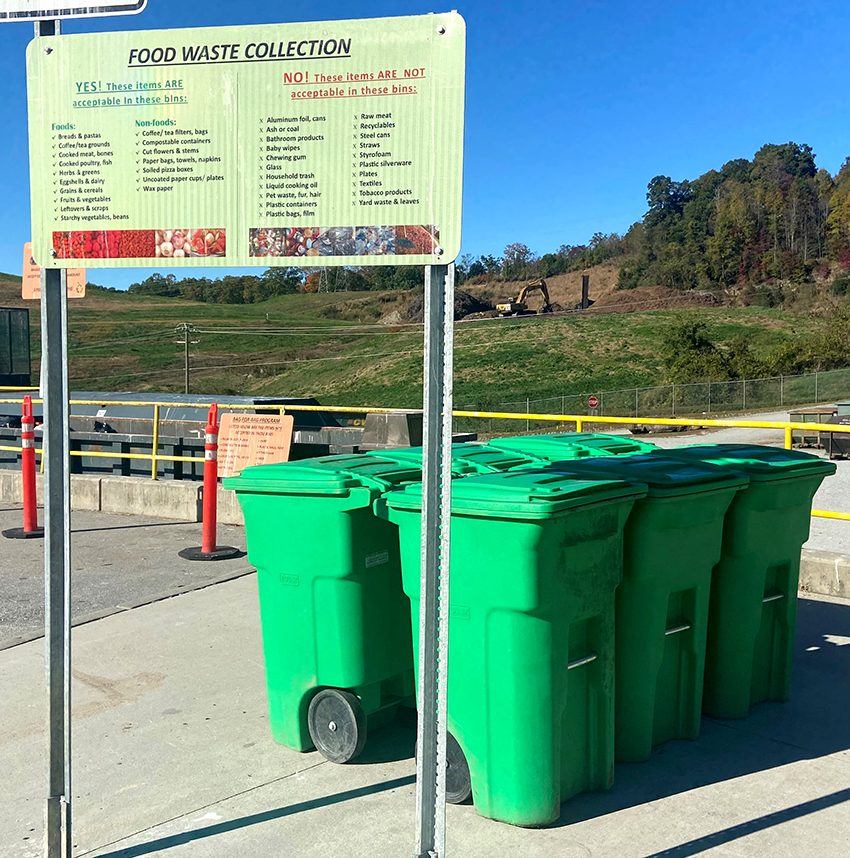
Henderson County’s drop-off site is located at its recycling center. Over 58,000 county households have access to the site. Photo courtesy of Henderson County Solid Waste
Qualitative Insights
The 2021 Residential Food Scraps Collection Access survey asked a variety of questions to gain insights into topics such as contamination, what motivates households to participate and initiatives to enhance more household participation, and program successes and barriers. The following is a summary of the responses to the qualitative questions:
- Contamination: 29 of 51 curbside programs reported a contamination rate of <5%; 11 reported <10% contamination and only a handful reported higher rates in materials set out at the curb. Eleven programs service carts with <5% contamination, and 9 service carts that have 5% to 10% contamination but households are issued a notice about what materials are accepted. A number of programs (29) have a zero tolerance policy; contaminated carts are tagged and not serviced. Only 6 of 31 drop-off programs reporting noted that contamination is an issue.
- Participation: Household participation was definitely cited as a pain point for both municipally supported curbside and drop-off programs. Of 50 curbside programs responding, 40 utilize flyers, door-to-door outreach and in-person training and classes to boost participation. Social media and digital advertising are used by 38 of the 50 programs, and about half use paid media (e.g., TV/radio/bus ads, billboards). Incentives include rate savings for 13 of the 50 programs. Other participation enhancements include providing households with a kitchen countertop bin and a starting supply of certified compostable liner bags.
- Household Motivation: Responses on factors that contribute to households participating in a curbside program (48 reporting) include household awareness about the negative environmental impacts of disposing of food scraps in landfills (18/48), and saving money by putting out less trash in their community’s pay-as-you-throw system. Eight reported household’s awareness about the amount of edible food wasted, and 2 of the 48 cited reduction of odors in the kitchen when keeping food scraps out of the trash.
- Gauging Program Success: The following metrics were used by respondents (48 reporting) to measure their curbside programs’ success: Participation (31/48); Meeting diversion goals (29/48); Avoided disposal costs (16/48); Cost-effective (16/48); and Reduced trash collection frequency (10/48). The two primary barriers to success included participation (25/48) and contamination (17/48). Other challenges include processing facility capacity, hauler cooperation and pick-up reliability, not having a single or municipal hauler, and language barriers.
- Drop-off Program Success: Of 31 drop-off programs providing insights, 20 indicated that food scraps drop-off helps their community meet its diversion goals; 14 noted that drop-off is less expensive than curbside, and 12 said their programs are cost-effective. When selecting drop-off site locations, the majority (20/31) said accessibility and convenience are keys. Other factors include placating residents who are not offered curbside access, and meeting state requirements. Participation is the primary barrier (16/31).
Bans and Mandates
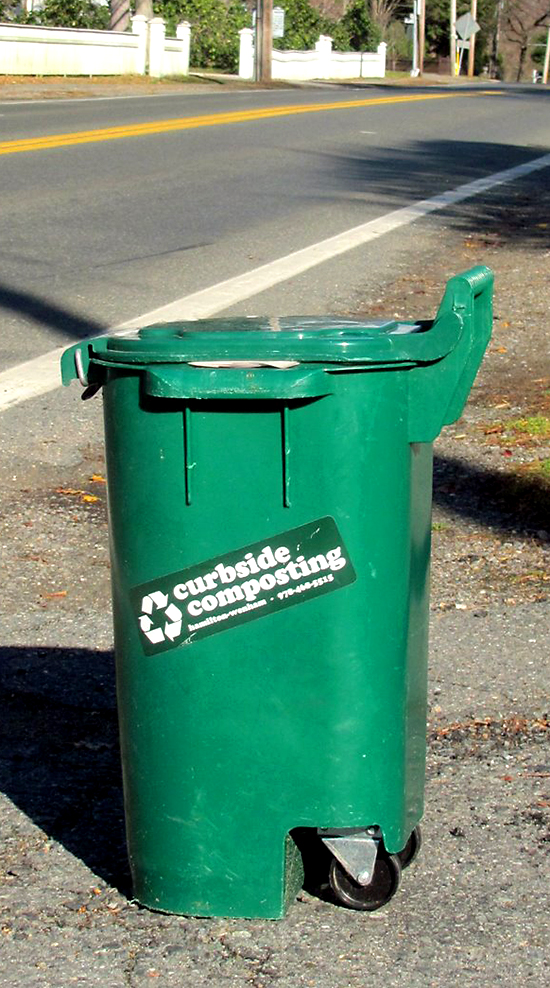
Town of Hamilton, Massachusetts 13-gallon residential curbside food scraps collection cart. Photo courtesy of Hamilton Waste Reduction Committee
The 2021 residential food scraps access study findings illustrate the role that a statewide food scraps disposal ban has on access to food scraps collection. In July 2020, Vermont’s ban on disposal of residential food scraps took effect. Jurisdictions have to provide households with access to food scraps collection via curbside and/or drop-off. All solid waste transfer stations in Vermont are required to accept food scraps via drop-off. Private subscription services are available in some parts of the state; in many cases, jurisdictions provide links to these services on their websites.
The other state with a requirement to recycle residential food scraps is California. SB 1383, the law that requires all organics must be diverted from disposal — including food scraps — is scheduled to go into effect on January 1, 2022. CalRecycle, the state agency overseeing the rollout and compliance with SB 1383, has a database of municipal programs that collect food scraps. As noted earlier, jurisdictions identified in that database received an access survey questionnaire, but many did not respond. In some cases, e.g., the City of San Diego and the northern part of Santa Barbara County, jurisdictions are still working out the details of their food scraps collection programs. The bottom line is that over the next two years, the number of residential food scraps collection access programs in California is going to increase significantly, along with the number of households with access.
At the local level, Hennepin County, Minnesota is an example of a mandate to recycle food scraps. Beginning in 2022, all cities in Hennepin County will be required to make curbside organics recycling service available to all households, through Ordinance 13. Cities with 10,000 residents or less will be given the additional option to meet the ordinance requirement through a drop-off location(s). The Ordinance covers residential households that are single family through fourplex and other residential households where each household has its own collection container for mixed recyclables. Cities are required to make curbside collection of organic material available by contracting for citywide service or by requiring haulers to provide the service. One hauler servicing Hennepin County is Randy’s Sanitation, which offers a “blue bag” program. Households put food scraps, soiled paper and allowed compostable products into the compostable blue bag, which is collected in the same truck as trash. Many communities have selected Randy’s Sanitation as the service provider.
Pockets of Growth
Westchester County, New York: Two individuals involved in environmental initiatives in Westchester County, New York (located near New York City) have been instrumental in establishing municipal food scraps drop-off sites in a number of communities in the county. They also have been doing similar work in Connecticut. These individuals provided data on 27 drop-off programs in Westchester County and 8 in Connecticut, all of which are captured in the 2021 report. The City of Scarsdale offer both curbside and drop-off collection; the City of Rye is doing a curbside collection pilot.
Illinois: The Illinois Food Scraps Coalition (IFSC) tracks residential food scraps collection access and shared its spreadsheet of programs in the state. One trend documented in the 2017 report, which has since grown, is access to food scraps collection via household yard trimmings carts. Known as “ride-along” programs for food scraps, this collection is seasonal, typically April-November. The IFSC spreadsheet does not include the processing facility receiving the food scraps; as a result that information is missing in the BioCycle curbside program table for many Illinois programs.
BioCycle extends a big thank you to all the jurisdictions and subscription services providing data for the study, and to state organics recycling officials who provided updated information on residential food scraps collection access programs. We also thank the Biodegradable Products Institute and the Foodservice Packaging Institute for underwriting the 2021 BioCycle Residential Food Scraps Collection Access Study.


